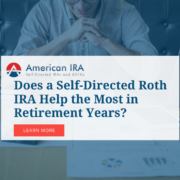Protecting Yourself from Rising Interest Rates Using a Self-Directed IRA
Warren Buffett famously quipped “it is only when the tide goes out that you see who has been swimming naked.”
Well, for investors, rising interest rates are the market’s way of making the tides go out. Investors in paper assets who are not careful could wind up high and dry. Rising interest rate environments are not too bad for Self-Directed IRA investors and Self-Directed Real Estate IRA investors, though, because they generally have the luxury of long-time horizons, and more flexibility to direct their investments into assets that are not negatively affected by increasing interest rates.
Assets to Avoid
Bonds generally do not do well when interest rates are rising. When interest rates rise, bond prices fall. A few bonds in unique credit situations or with extenuating circumstances may escape the overall trend, but the overwhelming majority of publicly traded bonds will generally follow market trends – and investors with a significant exposure to bonds will typically see the value of their portfolios decline, in the short run. Longer-duration bonds will be affected more than short-duration bonds.
This is not generally a reason to panic: You should still get your coupon payments as scheduled, and you should get your capital returned when any given bond reaches maturity. But you could take a loss in the meantime if you are forced to sell.
You may want to focus on high-yield and private placement bonds within your Self-Directed IRA. These bonds are not as closely tied to interest rates. Also, short-term bonds will only be minimally affected by modest interest rate changes. You can also reinvest quickly at higher rates as these bonds mature.
Assets to Consider
Self-Directed Real Estate IRAs
Self-Directed Real Estate IRA investors may be affected by interest rate fluctuations in the short-term. As interest rates rise, homes at any given price point become less affordable.
But long-term, buy-and-hold rental property investors may benefit: The higher mortgage rates rise, the more demand there is for rental property, as people put off home purchases. This can be very good for Self-Directed Real Estate IRA investors, as it helps support rent prices and drive down vacancy rates.
Self-Directed Gold and Precious Metal IRAs
When interest rates rise, it is typically because central banks are detecting inflationary pressures in the economy. That is why they are increasing interest rates – inflation is making them nervous.
It should.
But inflationary pressures generally work out well for gold and precious metals investors, who typically do well when inflation is high, or when the economic situation is uncertain.
You can own certain gold and precious metal coins and bullion within a Self-Directed Gold and Silver IRA. However, the coins and bullion must meet certain thresholds for purity and consistency, and not every coin or bullion form qualifies. You also cannot hold the assets directly. You must hold these assets through a third party such as American IRA.
Tax Liens and Certificates
These are increasingly popular instruments with Self-Directed IRA investors. The IRA holder identifies a property with a delinquent property tax bill attached to it and pays the taxes on the property owner’s behalf. The county gets its tax money, and you get a lien on the property that has to be repaid – typically at a very attractive interest rate.
These are technically debt instruments – but their interest rate bears little relationship to overall interest rate trends. Tax liens and certificates are often used to help diversify investment portfolios against interest rate risk and stock market risk.
Interested in learning more about Self-Directed IRAs? Contact American IRA, LLC at 866-7500-IRA (472) for a free consultation. Download our free guides or visit us online at www.AmericanIRA.com.








